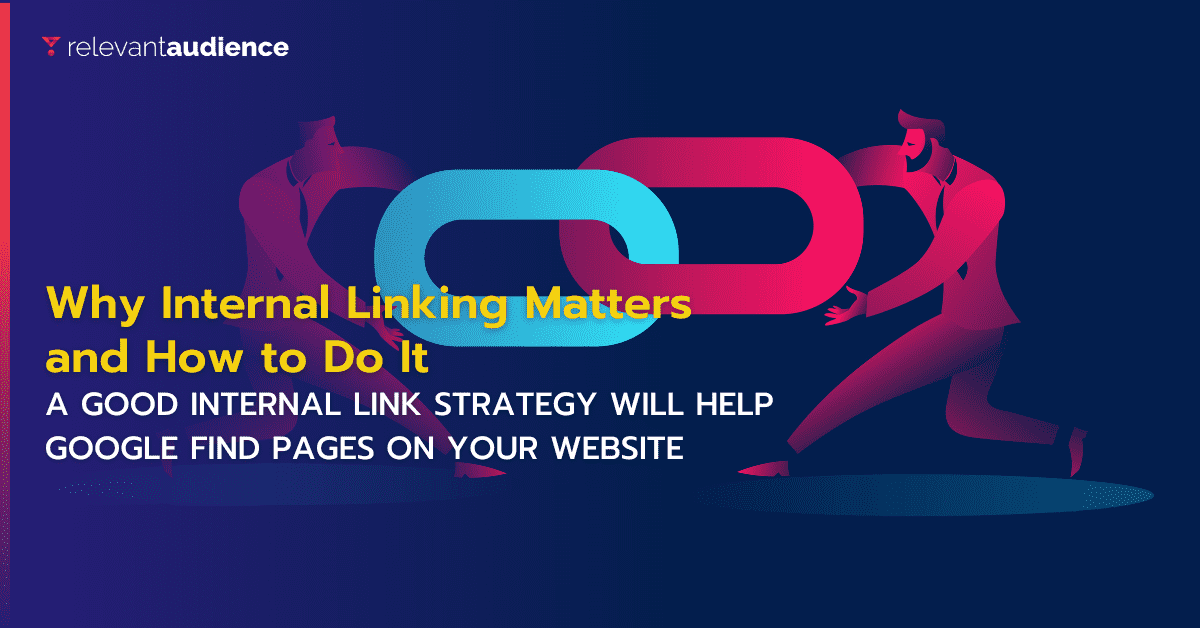Internal linking strategies and tips to optimize your SEO
Internal links are often the forgotten part of link-building methods in SEO strategies, for example, prioritizing other on-page optimization tactics.
Yet, internal links can improve the keyword ranking position related to your website content. In fact, a solid internal linking strategy can form a good foundation for all other areas of your SEO optimization.
The main reason is that internal links are critical for search engine crawlers to accurately index, comprehend, and promote your website content.
Other tactics are often more popular or may seem more appealing, such as building external links via backlinks, but the unsung hero is often developing an optimized internal linking strategy.
What is internal linking?
Internal links relate to links that point from one webpage to another within your website. On the other hand, external links are links that point to a webpage situated on another domain.
For example, a link to the Relevant Audience services page from this article is an internal link, and a link to Google’s PageSpeed Insights tool is an external link.
Often, it is tempting to focus heavily on building valuable links from external website sources. In contrast, there may be some quicker wins available in the form of optimizing your internal linking.
Internal links also form the basis of your website’s architecture, where your homepage is situated at the top, and your internal linking profile forms the basis of that structure.
Preferably, any webpage on your site should be accessible within three clicks at the most.
With that said, internal linking can be a part of SEO where mistakes are made, so it’s important to understand how you can prevent these internal linking errors.
Some key benefits of internal linking
In order to leverage internal linking to optimize your SEO, it is important to understand why it matters.
Here are three of the main benefits of internal linking:
Internal links support your website’s structure by helping search engines understand it
A robust internal linking structure can aid search engines in locating and indexing your website’s pages.
Leveraging optimized internal links is a reliable method of permitting Google to find relevant content on your website regularly. There is an added benefit: internal links can also help to show the appropriate relationship between two web pages.
A good rule of thumb is for new blog posts to always include an internal link relevant to another piece of content prior to going live. Relevancy is important, and an internal link should not be used if there is no appropriate relationship between the two linked pages.
Implementing internal linking incorrectly has the potential to damage your SEO.
When internal links are used correctly, this action will send a signal to search engines that one webpage is related to another.
Internal links help add authority
A well-established internal linking strategy helps to give your pages link juice (or “link equity”) by passing authority between the related pages on your website, which will improve their search rankings.
This is determined by an algorithm which is known as PageRank (PR), which is a value given to a web page as a mark of its popularity or significance, used to assess the order in which search engine results are presented: the more pages linking to and from a web page the more credible it will appear to the search engine bots, which in turn pushes up its PageRank.
Internal links help users navigate your website content more easily
Internal linking is a great way to improve your website’s user experience (UX) by assisting visitors to explore your website content.
For example, you may achieve this by taking a user to a service page where they can sign up for something that’s discussed in a blog article or to a related piece of content to give more details about a connected topic.
This part of linking can increase average user time-on-site and support your sales funnels; internal links can be a great way to boost your website’s UX, which also impacts your overall search performance.
Conclusion
An effective internal linking strategy can increase your content’s ranking in the search results.
Internal linking is a crucial part of on-page optimization. Yet, internal liking implemented incorrectly can negatively impact your website’s performance in the SERPs.
An excellent place to start is auditing your website’s current internal links. With the exception of an entirely new website, there is a good chance that you already have some internal links, even if this wasn’t considered or planned strategically. It is important to understand the current status of your internal before setting up a new internal linking strategy.
Internal linking does not need to be complicated. With the relevant data, tools, and planning, it is possible to implement a winning linking strategy that delivers impactful results.
If you have any questions about developing the best internal linking strategies or how to boost your SEO, please feel free to contact our expert team at info@relevantaudience.com for more information.




